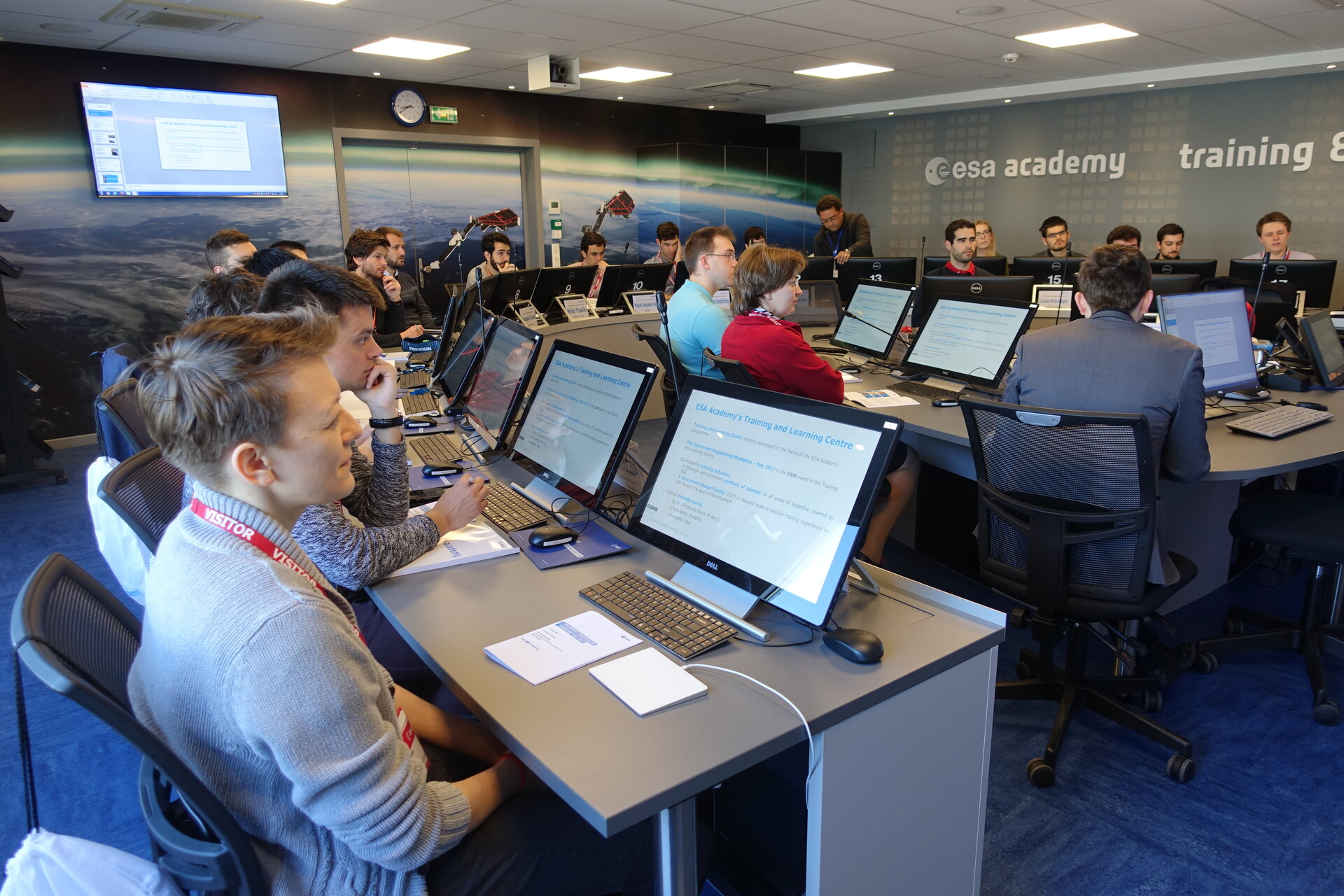Participate in the ESA Academy’s Concurrent Engineering Workshops!
ESA’s Education Office is looking for 44 talented and motivated university students from ESA Member or Associate States with an engineering or physics background to take part in one of the two upcoming Concurrent Engineering Workshops which will take place on the following dates: 20 to 23 February and 1 to 4 May 2018.
Concurrent engineering is a method of designing and developing products in the space sector. Contrary to the traditional design methods, in concurrent engineering all subsystems are designed simultaneously. This is a far more efficient way of designing, but it has its own challenges as well. Solutions in one area that could impact the design in another must be identified and communicated instantly. Although concurrent engineering is a more complicated process to begin with, in effect it allows mistakes to be identified earlier, therefore reducing the design time.
ESA’s main Concurrent Design Facility (CDF) is located at ESA’s technology centre (ESTEC) in the Netherlands. Within the frame of the ESA Academy programme, ESA has developed a similar facility exclusively for educational purposes, which is located at ESA’s European space Security and Education Centre (ESEC) in Belgium. Access to this facility complements what students are learning at university by familiarising them with the concurrent engineering approach.
Content of the workshops
The selected students will travel to the green expanses of Belgium’s Ardennes region, where the ESA Academy Training and Learning Centre is located. Guided by ESA experts, the students will learn about concurrent engineering and its benefits. They will use the Open Concurrent Design Tool (OCDT) and identify design drivers.
Students will be divided into groups of 2 or 3 and will cover the following disciplines: structures and mechanisms, configuration, power, thermal, AOCS, propulsion, optics/sensors, trajectory analysis, and communications/data handling.
Together with their group, students will create a subsystem concept in order to later achieve an already identified mission concept using concurrent engineering. They will start with a first iteration of all the subsystems and a budget that they will have to review and present before starting a second iteration. A second iteration will then be done according to the identified function tree and product tree and, at the end, the mission design will be finalised and presented.
A few weeks before the workshop, the selected students will receive OCDT tutorial documents to get familiar with the tool. Afterwards, a Webex meeting with a CDF expert will be organised so that students can be guided on the use of OCDT.
The deadline for applications is 5 January 2018, 23:59 CET.
Who can apply?
In order to participate, students must fulfil the following criteria at the time of application:
- be aged between 18 and 32;
- be a citizen of an ESA Member or Associate State*;
- be enrolled as a full-time MSc or PhD student in a university (not graduating before the workshop);
- be studying an engineering subject or physics.
ESA will cover the cost of accommodation and meals as well as up to 200 euros for travelling to Redu, Belgium, for each selected student.
How to apply
- Fill in the application form;
- Select preferred subsystems;
- Provide availability for the workshops dates;
- Upload a motivation letter (PDF, maximum 1 page, no images);
- Upload a CV (PDF, maximum 2 pages, no images);
- Upload a formal recommendation letter (PDF, maximum 1 page, including signature, no images) from a university professor or academic supervisor;
- Upload an official copy of academic records (PDF, in English, with the University Stamp).
For more information, please contact esa.academy @ esa.int















 Germany
Germany
 Austria
Austria
 Belgium
Belgium
 Denmark
Denmark
 Spain
Spain
 Estonia
Estonia
 Finland
Finland
 France
France
 Greece
Greece
 Hungary
Hungary
 Ireland
Ireland
 Italy
Italy
 Luxembourg
Luxembourg
 Norway
Norway
 The Netherlands
The Netherlands
 Poland
Poland
 Portugal
Portugal
 Czechia
Czechia
 Romania
Romania
 United Kingdom
United Kingdom
 Slovenia
Slovenia
 Sweden
Sweden
 Switzerland
Switzerland


























